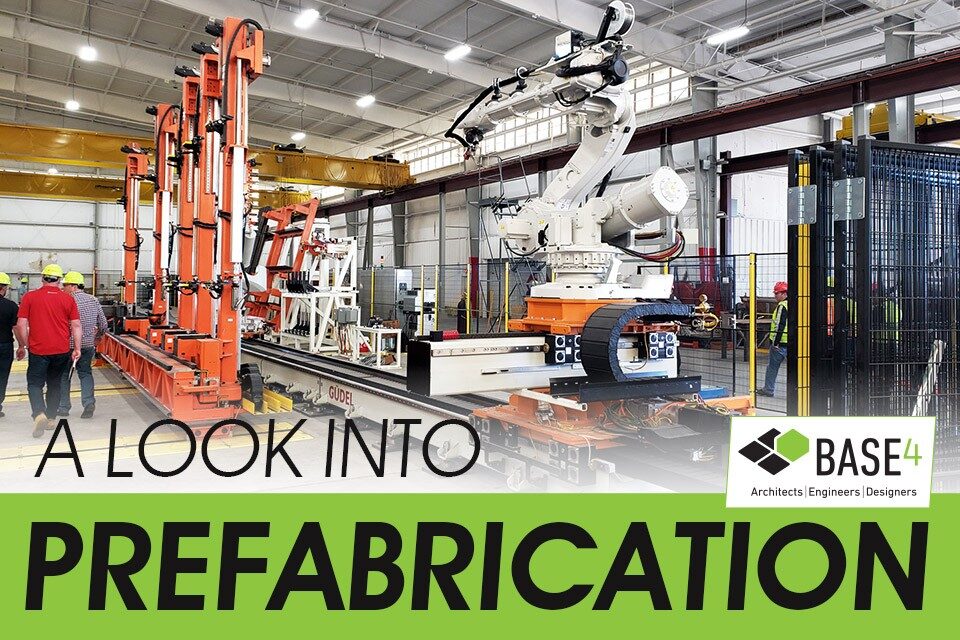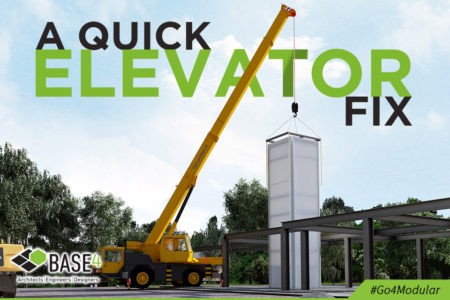The Manufacturing of Construction
Offering lucrative benefits and proven productivity, every developer can benefit from prefabrication
If you have ever used mass timber, wall or roof panels, or other pre-assembled items in your project, then you are an adopter of industrialized construction—better known as offsite, prefabricated, or manufactured construction.
There seems to be some gray area among these terminologies and modular construction. So, let’s take a quick look into these modern methods of construction (MMC) and their benefits.
![]()
Is Prefabrication the Same as Modular Construction?
While all volumetric modular construction is prefab, the opposite is not true.
Prefab, offsite, or industrialized construction is an umbrella term that encompasses several products like volumetric modular, shipping containers, and panelized components, among others. See the infographic below:
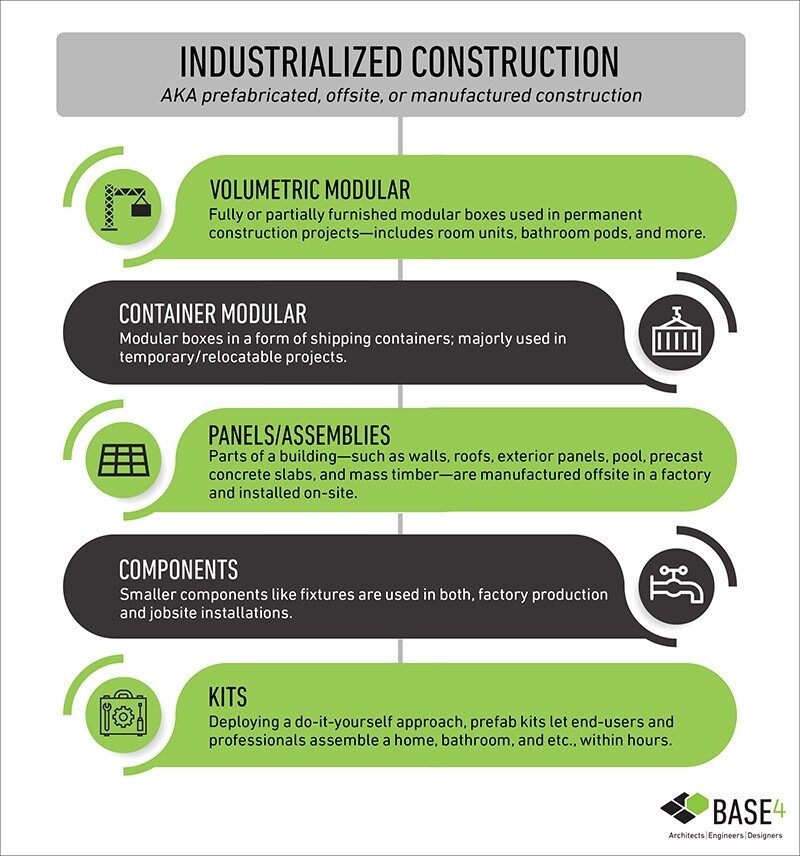
In volumetric modular construction, the units almost entirely are made in a factory and some even come with pre-installed finishes and MEP connections, while prefabrication includes smaller components, assemblies, and panels—and modular boxes.
Known for its assembly line approach, prefabrication uses the same design for manufacture and assembly (DfMA) principal we discussed a few weeks back. As a quick reminder, DfMA is an efficient and productive method of construction delivery–and the reason behind the success of prefabrication. Read on to find our more.
Why Consider Prefabrication?
In a recent study carried out by Dodge Data & Analytics, over 80% of professionals reported positive outcomes from prefabrication:
- Improved productivity, quality, and cost predictability
- Increased schedule certainty and client satisfaction
- Reduced construction waste1
With multiple benefits, prefabrication is becoming increasingly popular with more developers considering offsite construction techniques. Here are some more reasons why:
- Since building components are manufactured inside a factory, it gives greater control over weather and related delays.
- 86% of the professionals reported reduced construction waste through prefabrication, while 66% found it a better contender for safety.1
- The increased safety outcomes and waste reduction are also made possible thanks to prevention through design (PtD)–a concept that helps optimize resources and safety measurements right from the design phase.
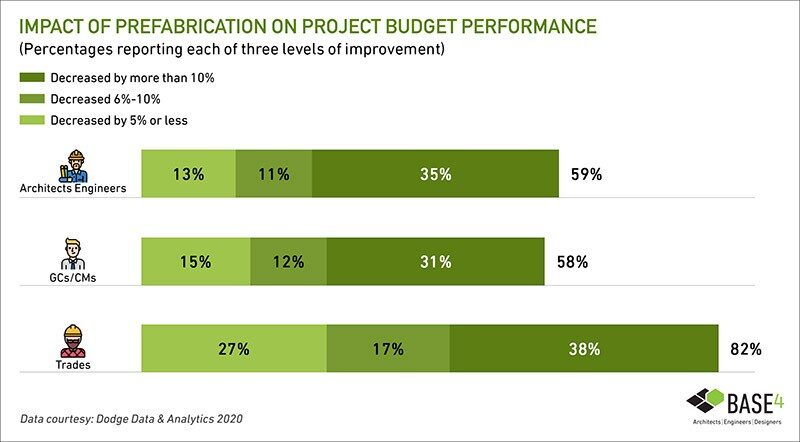
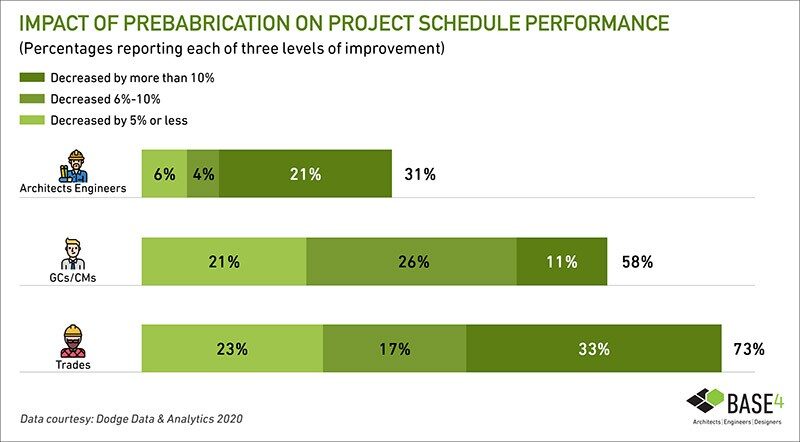
BIM and Prefabrication
DfMA and building information modeling (BIM) go hand-in-hand. For a successful project, planning and coordination is vital. BIM not only helps all project stakeholders be on the same page; it can also be a handy technology for operations and maintenance of the completed building.
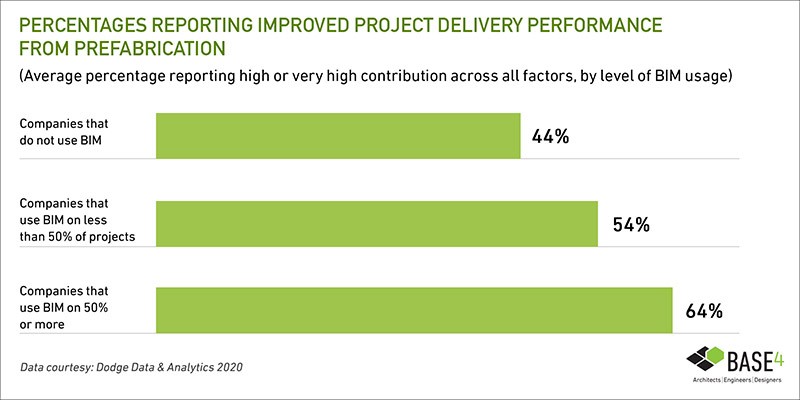
Go for it
The construction industry–despite technological advancements–is still largely fragmented and struggles with skilled labor and productivity. Over the past two decades, construction sector’s labor-productivity has shown an averaged 1% growth.2
In this uncertain economy, our industry can use all the predictability and productivity it can get. And prefabrication provides just that.
Depending on your project goals and schedules, you decide what, when, and how you want to build. Make sure to hire skilled and experienced consultants and designers to guide you through this process.
![]()

Thank you,
Blair Hildahl
BASE4 Principal
608.304.5228
BlairH@base-4.com
![]()
Sources:
1. SmartMarket Report, Dodge Data & Analytics, 2020
2. Reinventing Construction, McKinsey Global Institute, 2017

